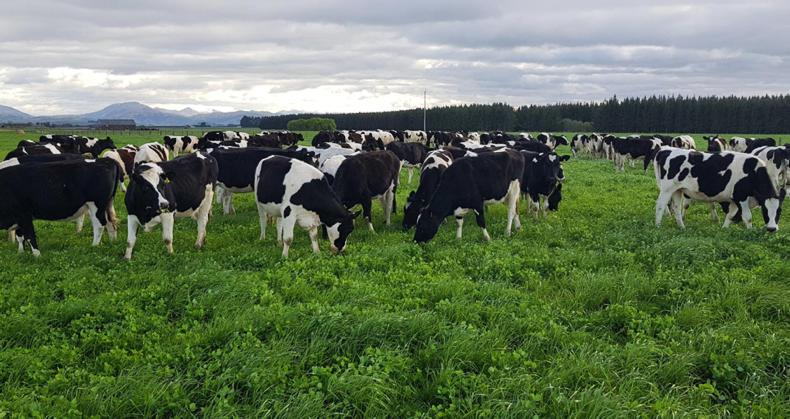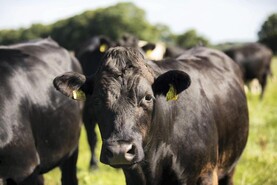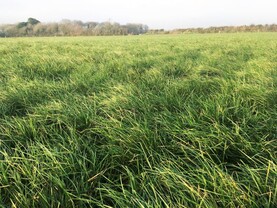Dairy cow ownership is the engine that will aid farmers most when trying to grow their business. Recognising this, New Zealand-based company Dairy Holdings have structured their company to encourage farm workers to grow their own herds.
“You don’t get ahead in farming by saving cash. This is not the engine. The driver of becoming a farmer is equity growth. Cash in the bank is too easy to spend,” says Adrian Van Bysterveldt, a farm practice advisor with Dairy Holdings.

Dairy Holdings farms 49,000 cows on over 14,000ha, which is spread across 59 different farms. Forty six of their 59 farms are run by contract milkers with sharemilking taking place on the remainder. Contract-milking is similar to sharemilking except the milker receives an agreed fixed payment on every kilogram of milk solids or litre sold.
In this case, Dairy Holdings supplies the land and infrastructure while contract milkers supply the labour and machinery. As well as being paid for each kilogram of milk solids produced, contract milkers are encouraged to rear heifer calves which can be leased back to Dairy Holdings when scanned in calf.
Replacement rate

All contract milkers working with Dairy Holdings must produce a 25% replacement rate in weaned calves eg in a herd of 1,000 cows they must supply 250 weaned heifer calves. The contract milker owns the remaining calves.
They can sell these calves at a couple of weeks old or rear them to weaning. If the latter is chosen they must pay $60/calf to help cover the rearing costs. However, all calves must be off the farm by 15 December (equivalent to 15 June in Ireland). Some contract milkers use beef bulls on later-calving cows to add value to the calves.
We don’t pay the highest contract-milking rates. We incentivise by providing pathways to grow equity. We use leasing as a tool to get engagement with operators on farm
Others are happy to take what dairy stock they can get to grow their own herds or for sale post-weaning. Van Bysterveldt gives the example of a young farmer in his third year contract-milking 1,300 cows who will own 750 cows next year through rearing heifers wisely.
When heifers are in-calf they can be leased back to Dairy Holdings provided they reach the minimum breeding worth (BW) figure agreed. BW is similar to the Econimic Breeding Index (EBI) in operation in Ireland.
There are two lease rates depending on each animals BW. The higher the BW, the higher the payment. This payment is designed to cover the interest cost of buying a cow and pay off some capital. 
“We don’t pay the highest contract-milking rates. We incentivise by providing pathways to grow equity. We use leasing as a tool to get engagement with operators on farm,” said Van Bysterveldt.
Another advantage of leasing cows into Dairy Holdings is that they live forever. Not literally of course, but if you lease 400 in-calf heifers to Dairy Holdings you will get back 400 similar in-calf heifers when you want to take them out. This is a good deal for the contract milker who can grow their herd without an animal dying or being culled. It also allows Dairy Holdings to expand there business as more cows are brought in.
Production budget
During the year contract milkers are paid on achieving 85% of budgeted production. If achieved they get a bonus at year end. Dairy Holdings employ supervisors to aid contract milkers and help them achieve their targets.
“A lot of us fall down because we love cows and grass. We can’t ignore the financial and budgeting,” explained Cork-native Aidan O’Leary, who is contract-milking with Dairy Holdings near Ashburton on the south island of New Zealand.
Dairy Holdings believe that the sweet spot is to have units of 750 to 900 cows. Three staff plus the contract milker generally operate these units. Dairy holdings look to set up dairy farms where the best dairy farmers want to operate.

A scene from Selywn Park Holdings, Matamata, Waikato, in New Zealand’s north island.
“Layout is more important than bells and whistles. The biggest thing that engages people is how they are treated,” says Van Bysterveldt.
Chief executive at Dairy Holdings Colin Glass believes the main key performance indicator (KPI) is how much cash comes from each farm to contribute to the business. The biggest driver of this is cost control.
Budgets are set out at the start of each year and monitored monthly. Farms are budgeted to produce 900kg of milk solids per hectare. Testament to the contract-milking model they are achieving 1,100 to 1,400kg of milk solids per hectare.
Dairy cow ownership is the engine that will aid farmers most when trying to grow their business. Recognising this, New Zealand-based company Dairy Holdings have structured their company to encourage farm workers to grow their own herds.
“You don’t get ahead in farming by saving cash. This is not the engine. The driver of becoming a farmer is equity growth. Cash in the bank is too easy to spend,” says Adrian Van Bysterveldt, a farm practice advisor with Dairy Holdings.

Dairy Holdings farms 49,000 cows on over 14,000ha, which is spread across 59 different farms. Forty six of their 59 farms are run by contract milkers with sharemilking taking place on the remainder. Contract-milking is similar to sharemilking except the milker receives an agreed fixed payment on every kilogram of milk solids or litre sold.
In this case, Dairy Holdings supplies the land and infrastructure while contract milkers supply the labour and machinery. As well as being paid for each kilogram of milk solids produced, contract milkers are encouraged to rear heifer calves which can be leased back to Dairy Holdings when scanned in calf.
Replacement rate

All contract milkers working with Dairy Holdings must produce a 25% replacement rate in weaned calves eg in a herd of 1,000 cows they must supply 250 weaned heifer calves. The contract milker owns the remaining calves.
They can sell these calves at a couple of weeks old or rear them to weaning. If the latter is chosen they must pay $60/calf to help cover the rearing costs. However, all calves must be off the farm by 15 December (equivalent to 15 June in Ireland). Some contract milkers use beef bulls on later-calving cows to add value to the calves.
We don’t pay the highest contract-milking rates. We incentivise by providing pathways to grow equity. We use leasing as a tool to get engagement with operators on farm
Others are happy to take what dairy stock they can get to grow their own herds or for sale post-weaning. Van Bysterveldt gives the example of a young farmer in his third year contract-milking 1,300 cows who will own 750 cows next year through rearing heifers wisely.
When heifers are in-calf they can be leased back to Dairy Holdings provided they reach the minimum breeding worth (BW) figure agreed. BW is similar to the Econimic Breeding Index (EBI) in operation in Ireland.
There are two lease rates depending on each animals BW. The higher the BW, the higher the payment. This payment is designed to cover the interest cost of buying a cow and pay off some capital. 
“We don’t pay the highest contract-milking rates. We incentivise by providing pathways to grow equity. We use leasing as a tool to get engagement with operators on farm,” said Van Bysterveldt.
Another advantage of leasing cows into Dairy Holdings is that they live forever. Not literally of course, but if you lease 400 in-calf heifers to Dairy Holdings you will get back 400 similar in-calf heifers when you want to take them out. This is a good deal for the contract milker who can grow their herd without an animal dying or being culled. It also allows Dairy Holdings to expand there business as more cows are brought in.
Production budget
During the year contract milkers are paid on achieving 85% of budgeted production. If achieved they get a bonus at year end. Dairy Holdings employ supervisors to aid contract milkers and help them achieve their targets.
“A lot of us fall down because we love cows and grass. We can’t ignore the financial and budgeting,” explained Cork-native Aidan O’Leary, who is contract-milking with Dairy Holdings near Ashburton on the south island of New Zealand.
Dairy Holdings believe that the sweet spot is to have units of 750 to 900 cows. Three staff plus the contract milker generally operate these units. Dairy holdings look to set up dairy farms where the best dairy farmers want to operate.

A scene from Selywn Park Holdings, Matamata, Waikato, in New Zealand’s north island.
“Layout is more important than bells and whistles. The biggest thing that engages people is how they are treated,” says Van Bysterveldt.
Chief executive at Dairy Holdings Colin Glass believes the main key performance indicator (KPI) is how much cash comes from each farm to contribute to the business. The biggest driver of this is cost control.
Budgets are set out at the start of each year and monitored monthly. Farms are budgeted to produce 900kg of milk solids per hectare. Testament to the contract-milking model they are achieving 1,100 to 1,400kg of milk solids per hectare.










 This is a subscriber-only article
This is a subscriber-only article















SHARING OPTIONS: